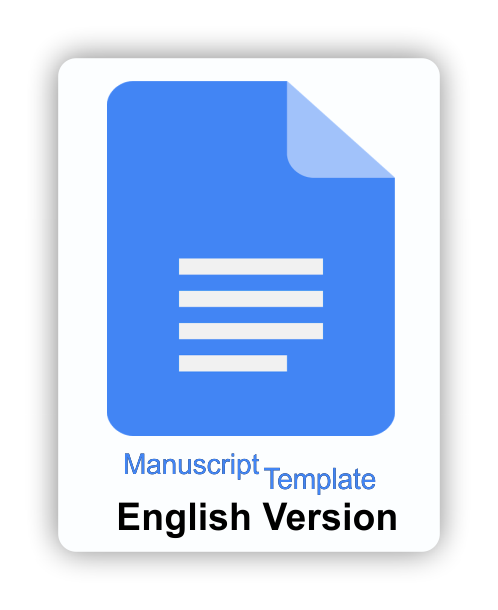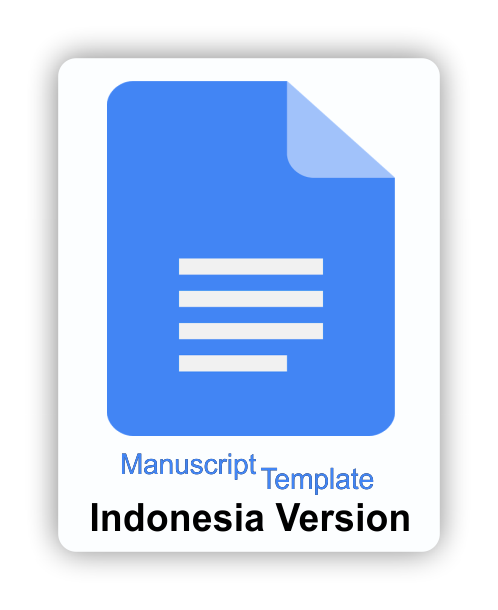Pengembangan multimedia interaktif topik prinsip Archimedes untuk mengoptimalkan student centered learning
Edi Supriana, (Scopus ID: 57211579469) Faculty of Math and Science, Universitas Negeri Malang, Indonesia
Sentot Kusairi, (Scopus ID: 57194720562) Faculty of Math and Science, Universitas Negeri Malang, Indonesia
Abstract
Tujuan dari penelitian pengembangan ini adalah untuk menghasilkan produk multimedia interaktif pada mata pelajaran Fisika topik prinsip Archimedes untuk siswa kelas XI. Penggunaan multimedia sangat membantu siswa dalam memaksimalkan belajar mandiri (student centered learning) serta membantu siswa untuk memahami konsep dengan lebih baik. Metode penelitian pengembangan yang digunakan adalah Research and Development (R&D) dengan model ADDIE. Kelayakan multimedia interaktif topik prinsip Archimedes berbasis power point diperoleh dari hasil uji empiris pada 3 mahasiswa dengan hasil rata-rata 5.08 kategori sangat baik. Berdasarkan hasil penelitian kelayakan media yang telah dilaksanakan maka diperoleh kesimpulan bahwa multimedia interaktif topik prinsip Archimedes layak digunakan sebagai alternatif pembelajaran di luar waktu sekolah oleh siswa. Selain itu, dapat menjadi bahan belajar mandiri (student centered learning) yang mampu meningkatkan pemahaman konsep siswa
Kata kunci: Multimedia interaktif, prinsip archimedes, student centered learning
Developing interactive multimedia in Archimedes principles to optimize student-centered learning
Abstract
The purpose of this development research is to produce interactive multimedia products on Physics subjects on the topic of Archimedes principles for grade XI students. The use of multimedia is very helpful for students in improving independent learning (student-centered learning) and helps students to understand concepts better. The research development method used is Research and Development (R&D) with the ADDIE model. The feasibility of interactive multimedia on the topic of Archimedes principles based on PowerPoint was obtained from the results of empirical tests on 3 students with an average result of 5.08 very good categories. Based on the results of a feasibility study on media that has been done it could be concluded about interactive multimedia, the principle of Archimedes used as an alternative worthy of learning outside of school time by students. Also, it can be self-learning materials that can improve student understanding
Keywords: Interactive multimedia, Archimedes principles, student-centered learning
Keywords
Full Text:
PDFReferences
Astuti, I. A. D., Sumarni, R. A., & Saraswati, D. L. (2017). Pengembangan media pembelajaran fisika mobile learning berbasis Android. Jurnal Penelitian & Pengembangan Pendidikan Fisika, 3(1), 57-62.
Akşan, E., & Eryılmaz, S. (2011). Why don’t mathematics teachers use instructional technology and materials in their courses? Procedia - Social and Behavioral Sciences, 15, 2471–2475. doi:https://doi.org/10.1016/J.SBSPRO.2011.04.130
Bates, T. (2005). Effective Teaching With Technology In Higher Education : Foundations For Success. Book Reviews/Recensions, 77–79.
Cairncross, S., & Mannion, M. (2001). Interactive multimedia and learning: Realizing the benefits. Innovations in Education and Teaching International, 38(2), 156–164. doi:https://doi.org/10.1080/14703290110035428
Chen, Y. C., & Chung, W. L. (2011). Research on the learning effects of multimedia assisted instruction on Mandarin vocabulary for Vietnamese students : A preliminary study involving e- learning system. Educational Research Reviews, 6(17), 919–927. doi:https://doi.org/10.5897/ERR11.166
Cheung, L. (2016). Using the ADDIE Model of Instructional Design to Teach Chest Radiograph Interpretation. Journal of Biomedical Education, 2016, 1–6. doi:https://doi.org/10.1155/2016/9502572
Chung, J. C., & Chow, S. M. (2004). Promoting student learning through a student-centred problem-based learning. Innovations in Education and Teaching International, 41(2), 157–168. doi:https://doi.org/10.1080/1470329042000208684
Danaswari, C., & Gafur, A. (2018). Multimedia pembelajaran berbasis web pada mata pelajaran akuntansi SMA untuk peningkatan motivasi dan hasil belajar. Jurnal Inovasi Teknologi Pendidikan, 5(2), 204–218. doi:https://doi.org/10.21831/jitp.v5i2.15543
Danks, S. (2011). The ADDIE Model: Designing, Evaluating Instructional Coach Effectiveness. ASQ Primary and Secondary Education Brief, 4(5), 1-6.
Dosi, F., & Budiningsih, C. A. (2019). Pengembangan multimedia pembelajaran untuk meningkatkan keterampilan menyimak bahasa Jerman. Jurnal Inovasi Teknologi Pendidikan, 6(1), 1–13. doi:https://doi.org/10.21831/jitp.v6i1.15068
Fazelian, P. (2011). Future of Instructional Technology. Procedia - Social and Behavioral Sciences, 30, 2052–2056. https://doi.org/10.1016/J.SBSPRO.2011.10.398
Gagne, R. M., Wager, W. W., Golas, K. C., Keller, J. M., & Russell, J. D. (2005). Principles of Instructional Design , 5th Edition. In Orlando: Harcourt BraceJovanovich publisher (pp. 44–46).
Gunawan, R. G., Siahaan, B. Z., & Astra, I. M. (2017). Pengembangan media e-learning berbasis web dengan pendekatan Contextual Teaching and Learning (CTL) untuk meningkatkan belajar mandiri mahasiswa. Prosiding Seminar Nasional Fisika (E-Journal), 6, SNF2017-RND. doi:https://doi.org/10.21009/03.SNF2017.01.RND.07
Haniin, K., Diantoro, M., & Handayanto, S. K. (2019). Pengaruh pembelajaran TPS dengan scaffolding konseptual terhadap kemampuan menyelesaikan masalah sintesis fisika ditinjau dari pengetahuan awal siswa. Jurnal Pembelajaran Sains, 1(2), 6–14. doi:http://dx.doi.org/10.17977/um033v1i2p6-14
Hannafin, M. J., & Land, S. M. (1997). The foundations and assumptions of technology-enhanced student-centered learning environments. Instructional Science, 25(3), 167-202.
Hannafin, M. J., & Rieber, L. P. (1989). Psychological foundations of instructional design for emerging computer-based instructional technologies: Part II. Educational Technology Research and Development, 37(2), 102–114. doi:https://doi.org/10.1007/BF02298294
Hasbiyalloh, A. S., Harjono, A., & Verawati, N. N. S. P. (2017). Pengaruh model pembelajaran ekspositori berbantuan scaffolding dan advance organizer terhadap hasil belajar fisika peserta didik kelas X. Jurnal Pendidikan Fisika Dan Teknologi, 3(2), 173-180. doi:https://doi.org/10.29303/jpft.v3i2.397
Heron, P. R. L., Loverude, M. E., Shaffer, P. S., & McDermott, L. C. (2003). Helping students develop an understanding of Archimedes’ principle. II. Development of research-based instructional materials. American Journal of Physics, 71(11), 1188–1195. doi:https://doi.org/10.1119/1.1607337
Hill, M., Sharma, M. D., & Johnston, H. (2015). How online learning modules can improve the representational fluency and conceptual understanding of university physics students. European Journal of Physics, 36(4), 045019. doi:https://doi.org/10.1088/0143-0807/36/4/045019
Kaniawati, I., Samsudin, A., Hasopa, Y., Sutrisno, A. D., & Suhendi, E. (2016). The influence of using momentum and impulse computer simulation to Senior High School students’ concept mastery. Journal of Physics: Conference Series, 739(1), 012060. doi:https://doi.org/10.1088/1742-6596/739/1/012060
Kim, A. K., & Davies, J. (2014). A teacher’s perspective on student centred learning: Towards the development of best practice in an undergraduate tourism course. Journal of Hospitality, Leisure, Sport and Tourism Education, 14(1), 6–14. doi:https://doi.org/10.1016/j.jhlste.2013.12.001
Kirkwood, A., & Price, L. (2013). Missing: Evidence of a scholarly approach to teaching and learning with technology in higher education. Teaching in Higher Education, 18(3), 327–337. doi:https://doi.org/10.1080/13562517.2013.773419
Kirkwood, A., & Price, L. (2014). Technology-enhanced learning and teaching in higher education: What is “enhanced” and how do we know? A critical literature review. Learning, Media and Technology, 39(1), 6–36. doi:https://doi.org/10.1080/17439884.2013.770404
Kurniawan, Y. (2018). The enhancement of consistency of interpretation skills on the Newton’s laws concept. JIPF (Jurnal Ilmu Pendidikan Fisika), 3(1), 28–30. doi:http://dx.doi.org/10.26737/jipf.v3i1.411
Putra, I. G. L. A. K., Tastra, I. D. K., & Suwatra, I. I. W. (2014). Pengembangan media video pembelajaran dengan model ADDIE pada pembelajaran bahasa Inggrisdi SDN 1 Selat. Jurnal EDUTECH Undiksha, 2(1). doi:http://dx.doi.org/10.23887/jeu.v2i1.3939
Muruganantham, G. (2015). Developing of e-content package by using ADDIE model. International Journal of Applied Research, 1(3), 52–54.
Nugroho, I. A., & Surjono, H. D. (2019). Pengembangan multimedia pembelajaran interaktif berbasis video materi sikap cinta tanah air dan peduli lingkungan. Jurnal Inovasi Teknologi Pendidikan, 6(1), 29–41. doi:https://doi.org/10.21831/jitp.v6i1.15911
Shishigu, A., Hailu, A., & Anibo, Z. (2018). Problem-based learning and conceptual understanding of college female students in physics. Eurasia Journal of Mathematics, Science and Technology Education, 14(1), 145–154. doi:https://doi.org/10.12973/ejmste/78035
Silviarista, M., Setyosari, P., & Sihkabuden, S. (2018). Pengembangan multimedia pembelajaran berbasis mobile untuk mata pelajaran bahasa Jawa materi aksara Jawa Kelas VIII SMP. JINOTEP (Jurnal Inovasi dan Teknologi Pembelajaran), 4(1), 22–27. doi:http://dx.doi.org/10.17977/um031v4i12017p022
Strommen, E. F., & Lincoln, B. (1992). Constructivism, technology, and the future of classroom learning. Education and Urban Society, 24(4), 466–476. doi:https://doi.org/10.1177/0013124592024004004
Sunismi, S., & Fathani, A. H. (2016). Uji validitas e-module matakuliah kalkulus untuk mengoptimalkan student centered learning dan individul learning mahasiswa S-1, Jurnal Review Pembelajaran Matematika, 1(2), 174–191.
Wagner, D.K., Carbone, E. & Lindow, A. 2013. Exploring Student Difficulties with Buoyancy. Paper presented at Physics Education Research Conference 2013, Portland, OR. doi:http://dx.doi.org/10.1119/perc.2013.pr.077
Wambugu, P. W., & Changeiywo, J. M. (2008). Effects of mastery learning approach on secondary school students’ physics achievement. Eurasia Journal of Mathematics, Science and Technology Education, 4(3), 293–302. doi:https://doi.org/10.12973/ejmste/75352
Wright, G. B. (2011). Student-Centered Learning in Higher Education. International Journal of Teaching and Learning in Higher Education, 23(3), 92–97.
DOI: https://doi.org/10.21831/jitp.v6i2.27672
Refbacks
- There are currently no refbacks.
Copyright (c) 2020 Tsania Nur Diyana, Edi Supriana, Sentot Kusairi

This work is licensed under a Creative Commons Attribution-ShareAlike 4.0 International License.
Our journal indexed by:
View Journal Statistics


















.png)